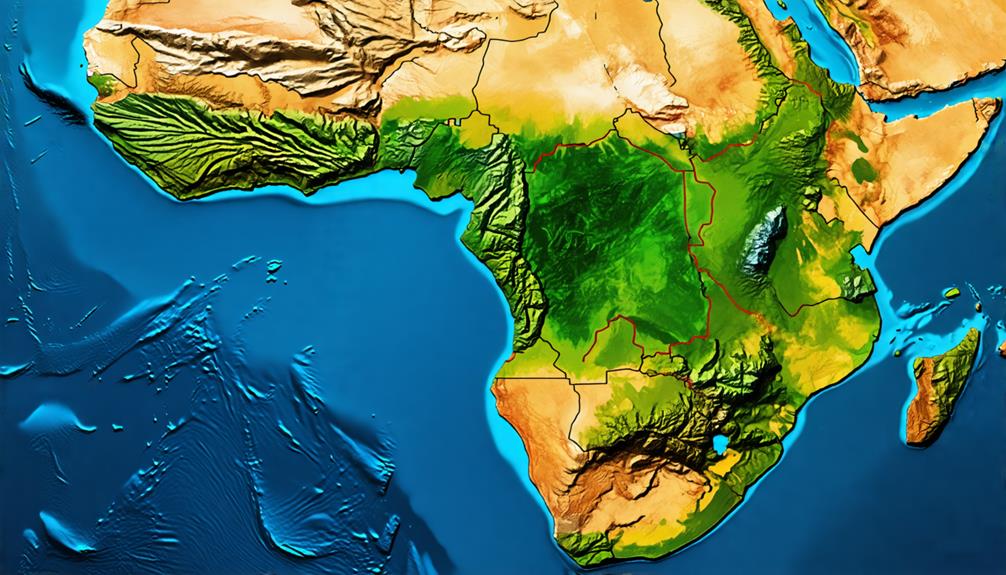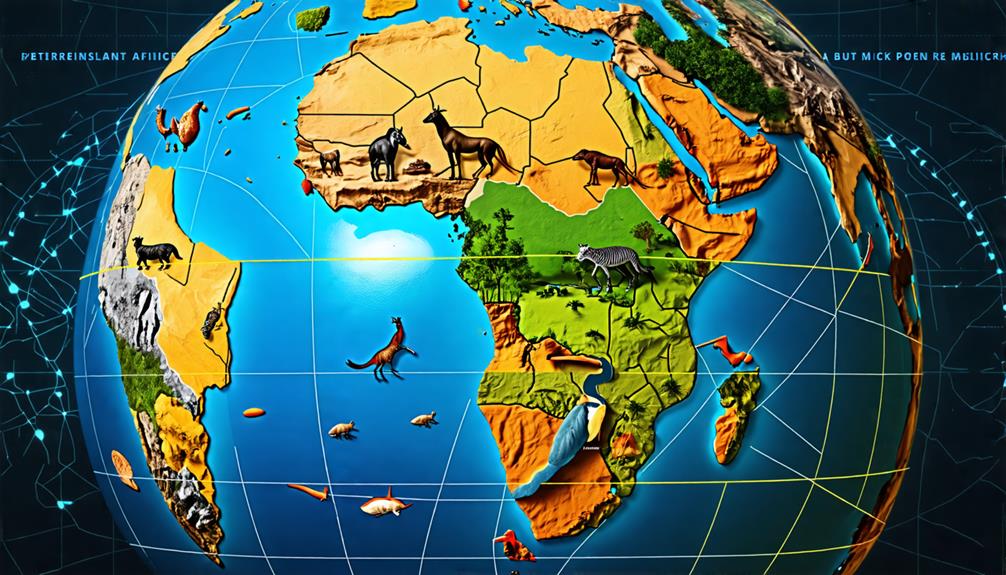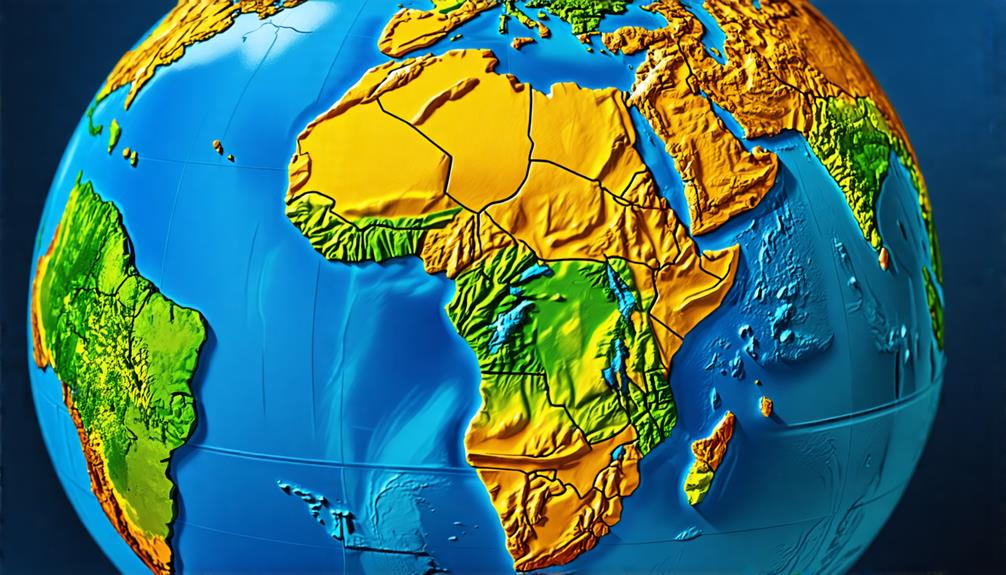You might not realize it, but Africa's geographical position is truly unique. It's the only continent that stretches across all four hemispheres, straddling both the Equator and the Prime Meridian. This distinctive feature isn't just a fun fact; it has far-reaching implications for the continent's climate, biodiversity, and even its cultural and economic landscape. As you consider Africa's place in the world, you'll find that this hemispheric diversity plays an essential role in shaping its identity and global significance. But what exactly does this mean for the people who call Africa home?
Key Takeaways
- Africa spans all four hemispheres: Northern, Southern, Eastern, and Western.
- The Equator bisects Africa, placing parts in both Northern and Southern hemispheres.
- The Prime Meridian crosses five African countries, dividing the continent between Eastern and Western hemispheres.
- Africa's unique position contributes to its diverse climates, ecosystems, and cultures.
Africa's Unique Geographical Position

There's something extraordinary about Africa's placement on the globe: it's the only continent that straddles all four hemispheres, giving it a unique geographical position that shapes its climate, biodiversity, and cultural landscape.
This geographical uniqueness stems from Africa's expansive landmass spanning the Northern, Southern, Eastern, and Western Hemispheres. The Equator bisects the continent, running through seven countries and influencing climate patterns. Simultaneously, the Prime Meridian crosses five African nations, affecting time zones and navigation.
This intersection of major global lines creates a diverse tapestry of ecosystems and cultural interactions. You'll find that Africa's position at this geographical crossroads contributes to its rich biodiversity and varied agricultural practices.
From tropical rainforests to arid deserts, the continent's range of climates supports an incredible array of plant and animal species, making Africa truly one-of-a-kind.
Equator and Prime Meridian Intersections
Africa's unique position across all four hemispheres is further highlighted by the intersection of two major global lines: the Equator and the Prime Meridian. These geographical markers divide the continent into Northern, Southern, Eastern, and Western sections, creating a diverse tapestry of ecosystems and climates.
You'll find the Equator crossing through seven African countries, including Kenya and Uganda, while the Prime Meridian intersects five nations, such as Ghana and Algeria. This positioning plays a vital role in shaping Africa's biodiversity and agricultural practices. It also influences time zones and navigation across the continent.
The intersection of these lines has historically impacted trade routes and cultural exchanges. Today, it continues to affect Africa's economic and cultural interactions with the rest of the world. This unique geographical feature sets Africa apart, making it the only continent to span all four hemispheres.
Implications of Hemispheric Diversity

The continent's unique position spanning all four hemispheres creates a rich tapestry of climatic, ecological, and cultural diversity.
Africa's presence in both the Northern and Southern Hemispheres, as well as the Eastern and Western Hemispheres divided by the Prime Meridian and Equator, results in diverse climates that shape its varied ecosystems and agricultural practices.
You'll find this hemispheric diversity fostering vibrant cultural exchanges among Africa's numerous ethnic groups and languages.
The continent's strategic location at the intersection of these four hemispheres enhances its geographic significance, influencing trade routes and navigation.
This unique position also facilitates economic partnerships and tourism opportunities, making Africa a pivotal point for global interactions.
As you explore the continent, you'll witness how its hemispheric distribution contributes to its rich biodiversity, seasonal patterns, and cultural vibrancy.
Conclusion
You've just explored Africa's unparalleled geographical position.
It's the only continent spanning all four hemispheres, creating a tapestry of diverse climates and ecosystems.
You've seen how this unique feature shapes agriculture, culture, and global trade.
As you reflect on Africa's hemispheric diversity, remember it's not just a geographical curiosity—it's a powerful force driving the continent's ecological richness and economic potential.
Africa's position truly sets it apart on the world stage.

Leave a Reply